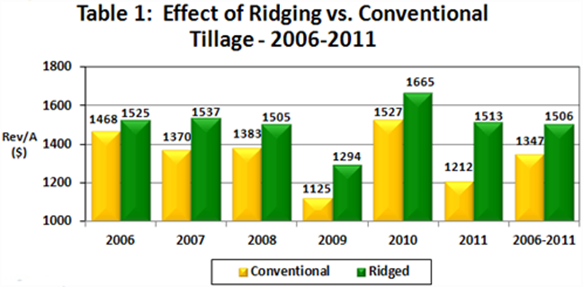571 - Critical Decisions - Drought - Fall Tillage - Field Selection for 2013
FALL TILLAGE FOR 2013 SUGARBEET FIELDS MAY BE MUCH MORE CRITICAL THAN IT HAS BEEN FOR MANY RECENT YEARS. LACK OF summer and fall rains and potentially drier than average seedbeds next spring make fall decisions that much more important. Dry soil conditions this past spring resulted in wet and dry zones in the seedbed that led to uneven germination and emergence in many fields.
Seedbed Preparation Objectives
- Manage crop residue in the fall to minimize negative impact on 2013 stand establishment
- Incorporate fall applied fertilizer - deeper incorporation will improve fertilizer use efficiency in a dry Spring
- Maintain enough residue to reduce wind erosion and stand loss in a dry spring
- Create uniform conditions in the top 3-4 inches of soil to avoid moisture variability in the seed placement zone next spring
- Prepare fields this fall so stale seedbed planting becomes a 2013 option if necessary
- Fall ridging will maximize stands and 2013 profits, see Table 1

Field Selection to Maximize Available Soil Water In 2013
- Choose fields with multiple years of wheat or barley in rotation
- Follow dry edible beans in rotation
- Follow potato in rotation
- Avoid fields if possible with soybean in rotation since the last beet crop
- Avoid fields when possible with corn in rotation since the last beet crop
- Avoid fields with sugarbeet in recent years

Other Field Selection Considerations
- Review pesticide use records for rotational restrictions that may exist
- Know rented land history, insects, diseases, and herbicides
- Review past disease history for variety selection for each field
- Know fertility status - get a soil test
- Drainage requirements to improve yield
- Past weed problems and severity of each weed and resistant weeds
- Consider herbicide carryover from the previous crop, especially if it stays dry
- Know soil types in each field and what impact will be on available water
- Estimate available stored soil water capacity for each field if 2012 remains dry
- Review crop rotations for the past 3-4 years and plant sugarbeets where available water is greatest
Fall ridging acres have increased from 18,600 in 2006 to 36,400 in 2011. Clearly producing better crops in wet or dry years.
